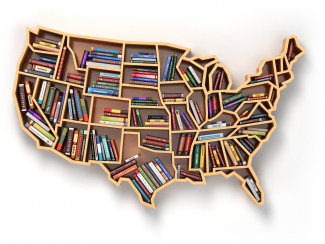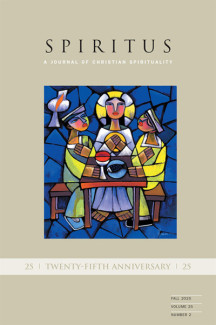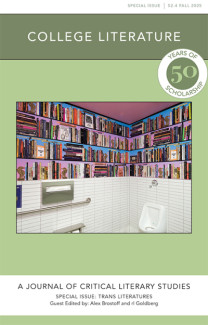
Johns Hopkins UniversityEst. 1876
America’s First Research University
Timelines of American Literature

When did the twenty-first century begin? There may briefly have been a temptation to say it began at 12:01 on the first day of January in the year 2000, in that burst of elation and relief when everyone discovered that the dreaded “Y2K bug,” instead of unleashing havoc on the world’s computer networks, turned out to be nothing at all. But the kind of story to which that moment seems to belong—about a wondrous era of global peace whose perils the world’s software engineers can ably avert—would soon sound like a fairy tale.
As literalists will point out, the twenty-first century “actually” began in 2001, not 2000. But the stories of human history and culture—what defines an era, a chapter of time—do not follow clocks and calendars. “The twentieth century” arguably did not start to mean what it now means until the shocks and ravages World War I. Or it started much earlier: Gertrude Stein wrote, “by the methods of the civil war and the commercial conceptions that followed it, America created the twentieth century.” The twenty-first century is of course a contested, unfolding story that only future historians will have a shot at telling. But one good way to begin the conversation—to understand what matters in the story that ultimately will be told—is to think about when the story begins.
No sooner had the Y2K bug faded from view than other main characters leaped into the picture: weaponized airplanes, smartphones, “active shooters,” presidents who upended traditions (one of whiteness, another of minimal integrity). Maybe the century began on September 11, 2001, maybe on November 9, 2016, or maybe it began many years ago, when the first fossil fuels were burned, setting into motion the ecological crisis that defines our current age. Maybe, to future generations, this century will be defined by some watershed we have yet to witness.

The dates and periods we use to narrate the era in which we live are a crucial part of how we produce the meaning of the cultural past. In our book, Timelines of American Literature, 23 leading scholars reconsider some of the dates that conventionally shape literary and cultural history. Their brief, inventive essays chart new, unorthodox periods. Some reach as far back as 600 B.C.E. (the “setting,” as it were, of the Book of Mormon), some draw up to the present, and some point toward an uncertain future. All of them show how shifting the date ranges we’re accustomed to can generate new ways of seeing American literature and culture—foregrounding the surprisingly long era (1629-1852) of the patroon system of land ownership in the former Dutch colony of New York, for instance, or the period (1833-1932) of contestation over different systems of embossed print by and for the blind.
Many of the volume’s essays demonstrate that knowing the present demands understanding the past. For Annie McClanahan, reckoning with the effects of the financial crisis of 2008 requires understanding the development of the novel and draws us back to John Dos Passos. For Birgit Brander Rasmussen, “nightmarish examples” of captivity in the twenty-first century—in places like Bagram, Abu Ghraib, Guantanamo, and (though this last was yet unknown at the time of her essay’s writing) migrant cages along the Texas border—echo the horrors recorded in captivity narratives published centuries ago.
The essays in Timelines of American Literature remind us that dates matter. They foster understanding, not by marking off boundaries to be policed but by helping us trace the different ways in which literary history flows—like the multiple, winding courses of the Mississippi River on the book’s cover.
Cody Marrs is an associate professor of English at the University of Georgia. He is the author of Nineteenth-Century American Literature and the Long Civil War and the editor of The New Melville Studies. Christopher Hager is the Charles A. Dana Research Associate Professor of English at Trinity College. He is the author of Word by Word: Emancipation and the Act of Writing and I Remain Yours: Common Lives in Civil War Letters. Together, they are the editors of Timelines of American Literature.


